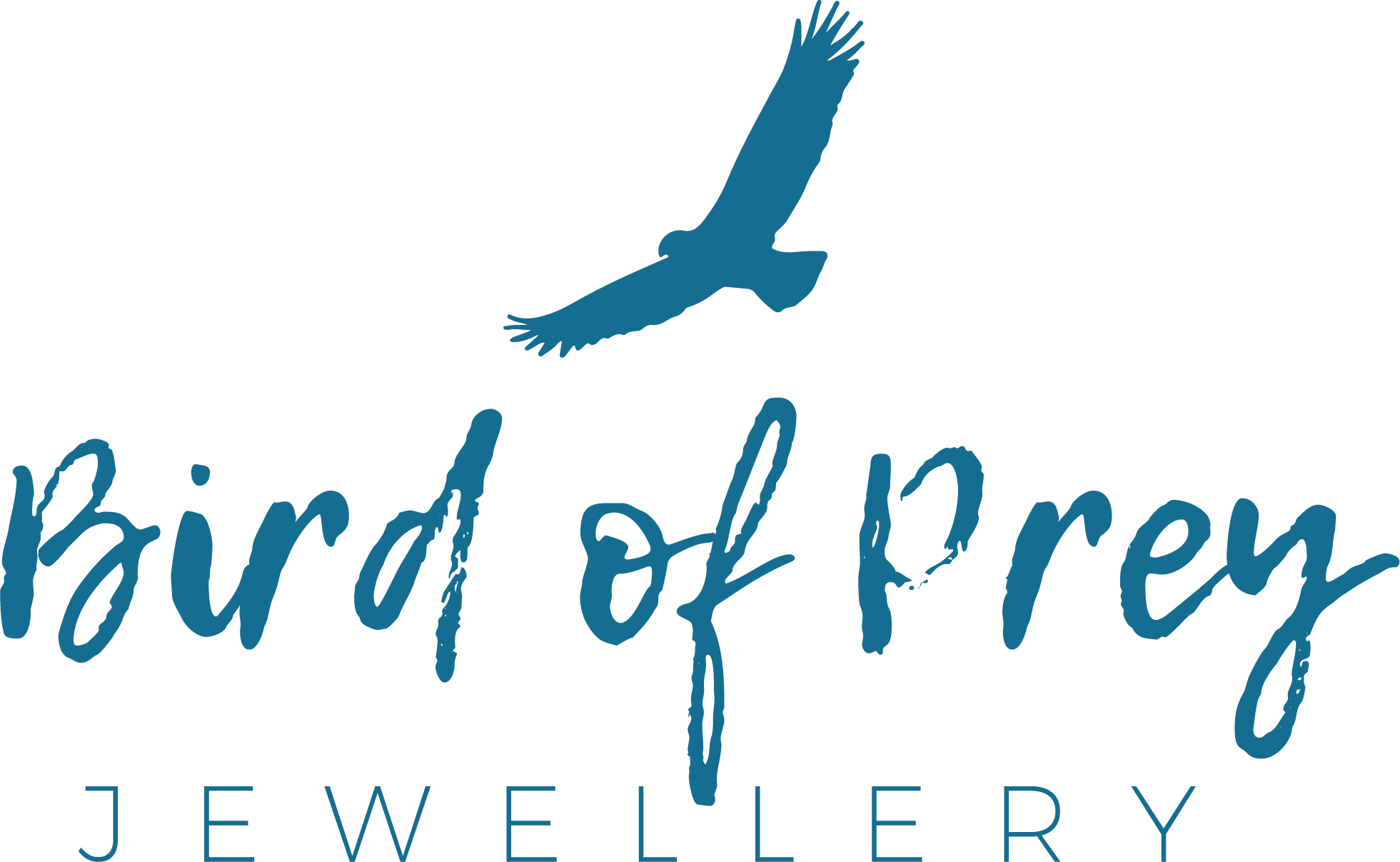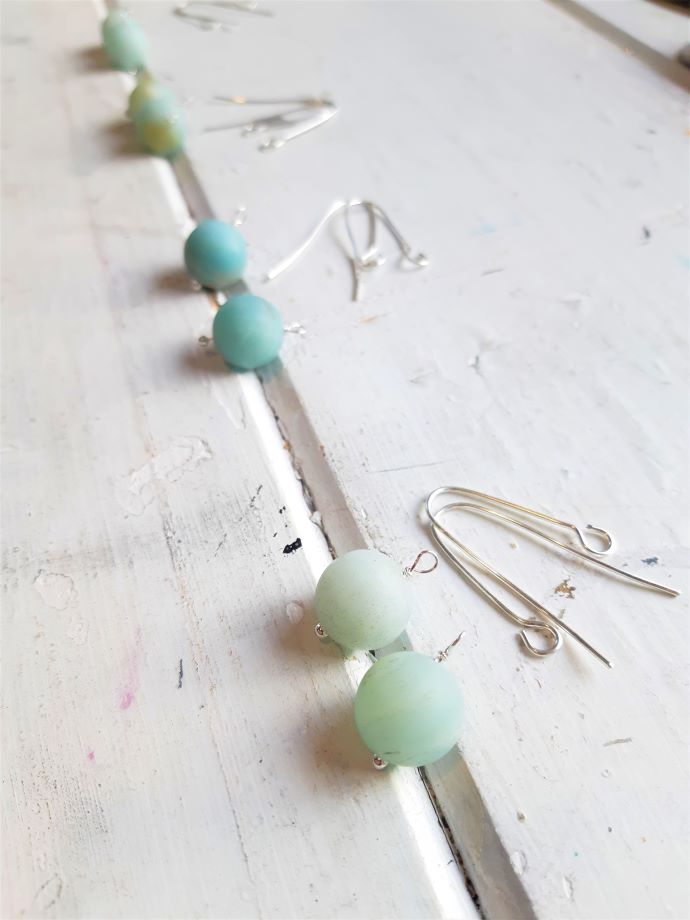Your Savvy Earring Guide to Keep Sensitive Ears Irritation Free.
Do you ever get irritated ears, sore, red or itching from wearing earrings? Chances are, you have very sensitive ears. And no, I don't mean super-power hearing!
Unfortunately, like many people, you are probably partly or extremely allergic to the materials in the earring fitting. Too awful and its probably driving you crazy that you can't wear the earrings you love.
Want to know what to do if YOU have sensitive ears?
For you, I've listed below the potential offenders to help you understand why you have had difficulty wearing earrings and suggest what materials are suitable for sensitive ears.
If you haven't been able to wear earrings comfortably, try my top star rated options. If you have already made a purchase you regret, read the quick fix tips that follow so you can still wear those earrings without irritation.
A Note About Safety Standards
Restrictions vary from country to country on materials used in jewellery. Many can irritate, like nickel for example, or even toxic substances such as lead and cadmium can be alloyed with precious metals.
These materials are added to the mix to enhance the properties of a base material, be it pure gold, rolled gold, sterling silver etc, for hardening, colour and or for malleability.
Imported products may contain these materials unbeknownst to the purchaser. Sooooo, your best course of action is to check the product descriptions for materials likely to offend. If it is an alloy and doesn't say nickel-free, nickel safe or hypoallergenic then it's probably going to be a source of irritation for you or a pair to wear for short periods only.
Cross-reference the material against my list below and choose earrings you can be sure won't drive you crazy after five minutes of wearing them. I have also considered the price of these options when awarding my stars. My top picks rank first.
Four and five-star raters can also be considered suitable for fresh piercings.
Note: the asterisk denotes materials used in the making of our earrings at Bird of Prey Jewellery.
Niobium *
A superstar material for earring findings - Niobium comes in many electroplated colours along with brass, bronze, copper and silver tones. A natural, non-reactive, pure element sometimes used in surgical applications.
Durable and long-lasting, niobium is an excellent choice for those with sensitive ears who want to wear an alternative to base metals, such as brass, bronze that may irritate them. A little expensive but worth it for the colour options available and unsurpassed hypo-allergenicity.
Five stars
Argentium Silver*
Another superstar option. Non-reactive germanium replaces copper (used in Sterling Silver and often a source of irritation,) to harden the material in the manufacture of 935 Argentium silver. So this material is considered hypoallergenic and great for sensitive ears.
This silver material is recycled, not made from virgin silver ore, so that's better for our environment.
Bonus points! It's also anti-tarnish, requiring less polishing and cleaning, therefore better for the longevity of your earrings.
Five stars
Titanium
Titanium is durable, tarnish-resistant and non-toxic. This light-weight, natural element makes an excellent choice for allergy sufferers.
However, the extraction and processes required to turn this into a suitable jewellery making material are complicated, though it's still affordable.
Four and a half stars
Platinum
An inert (non-reactive) material usually alloyed with gold. Very rare and expensive so naturally, this gets a lower star rating from me.
Four stars
Palladium
Rare, but more affordable than platinum, palladium is also lighter and more durable. Not alloyed with the two main offenders, nickel or cadmium, Palladium is unlikely to irritate.
Four stars
Pure gold
24 karat gold is excellent for sensitive ears. But sorry, this doesn't often exist in jewellery manufacture these days. Due to its softness, gold needs alloying with other materials. Silver, copper and zinc are added for colouring and more durability, therefore more suitable for jewellery.
Your next best option to protect your ears is 14 to 18 karat solid gold, but as this also comes with a high price tag, thus my rating is just four stars.
Gold-filled or rolled gold *
This term refers to a thick layer of varying gold purity, usually 10 to 18 karats. Gold alone is soft, so it's mixed (alloyed) with other metals to give durability. The higher the karat, the more susceptible it is to wear.
In a nutshell, the lower the karat and the thicker the layer, the longer the piece will last. Go for a happy medium of 14 karat gold-fill for happy ears.
Four stars
Gold Vermeil
A thick gold, electroplated layer, ten karats and above, over a solid sterling silver core. A great solution on par with gold-filled pieces.
The plating wears down eventually, but most people can happily tolerate exposure to the sterling silver.
Four stars
Sterling silver*
Great for most, but not all. Sterling silver, otherwise known as 925 silver, is an alloy made from 92.5% silver and 7.5% alloy. It's the alloy part that can pose a problem. This small component, added for colour or durability, can be zinc, copper or unfortunately, nickel.
Unless a product states it is made with hypoallergenic silver, i.e. nickel-free, you can't be sure whether or not the piece contains nickel or not.
Look for 925 hallmark stamping where possible or beware the omission of a nickel-free claim.
Four stars
Stainless steel
Most people do not react to medical-grade stainless steel. It's sturdy and not too expensive, but some manufacturers will alloy this with nickel, so stainless steel gets four stars from me.
Plastic or Acrylic
As long as its medical-grade plastic, this is an excellent choice, allowing those with sensitive ears to wear their jewellery for long periods, in comfort.
A durable material, but I don't advocate the manufacture of plastic for environmental reasons, so although your ears are protected, this solution only gets three stars.
Stone, Bone and Wood
They're used for plug-style earrings and stretchers rather than hooks or studs.
Three stars
Copper
Copper, although inexpensive and ok health-wise, oxidises with air and skin moisture, turning your lobes green. Visually not desirable, but you should be able to wear in comfort.
Three stars
Bronze and brass
Bronze is an alloy of copper and tin, brass a mix of copper and zinc. As above, the copper can react with the wearer and produce an undesirable green tinge.
Both three stars
Rhodium, Gold or Silver Plating
There is no industry standard for the thickness of the plating on jewellery.
Over time the plating will wear, and you will be exposing your ears to whatever alloy is beneath. And it probably isn't ideal, except for gold vermeil, or why would it be plated in the first place? At least it's cheap, I guess!
Two stars
Hypo-allergenic
is a term often used claiming irritation-free wear. However, the reality is hypoallergenic materials only reduce rather than eliminate the possibility of a reaction.
Hypo-allergenic is not a term used in the industry for your safety, but as a marketing term. I have placed this way down the list because, although the maker may make this claim, the coating could wear off over some time, exposing potential irritants.
Two stars
Metal alloys
These could include ANYTHING. You are best to leave these for folks who can tolerate alloyed metals.
No stars
Argentium silver ear wires.
Handmade 935 Argentium silver wire earring hooks used for the Amazon Drop Earrings.
Display them confidently on your earring rack - no need to polish these hooks every two seconds as the material is anti-tarnish!
So, what if you bought a beautiful pair of earrings because you love them and now can't wear them?
Try one of these quick fixes to protect your sensitive ears:
-
Coat the hook or earring finding with a clear nail polish
-
Have a jeweller swap out the hook or finding with a higher-ranking material from the list above - come and see me at the Studio.
-
I've heard a layer of vaseline can work in a pinch. I haven't tested it, but it could be worth a try
Preserve your jewellery by storing pieces carefully, so they are not touching, sealed from the atmosphere where possible to avoid tarnishing and the need for additional polishing.
Don't bathe, swim or shower in your jewellery as chlorine and salt are corrosive, reacting with and degrading the surface of your jewellery.
Bookmark this blog, arming yourself with the information you need next time you're out shopping. If you make good jewellery purchasing choices, your precious, sensitive ears will thank you for it.
Did you enjoy this blog? You might enjoy reading these:



